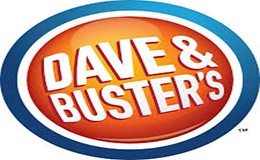This year, getting a flu shot is more important than ever. Yet many people avoid the flu shot. One of the reasons is fear of needles – needle phobia. Most children and up to half of teens are afraid of needles, according to a recent analysis.
Steps Parents Can Take
Parents may not know what to do when a child’s fear of needles causes anxiety and distress. Here is some guidance:
- Acknowledge your child’s fear of needles, but don’t dwell on it. Help her move on to other thoughts. After you listen to your child’s concerns, restate them in a neutral way: “I understand how you feel about getting your flu shot. It’s not pleasant for anyone.” Then help your child move forward. “Vaccinations are really important. They protect you and the people around you from serious diseases. I think I just saw a redbird at the feeder. Let’s go take a look.”
- Don’t threaten punishment or offer bribes.
- Don’t make promises you can’t keep. If you promise “no shots” to get your child in the door of the clinic, you jeopardize your child’s trust in what you say.
- Teach your child relaxation techniques to help him cope during times of anxiety. One technique is to focus on the breath. See sidebar for directions.
Distraction Techniques
Distraction techniques help reduce fear and anxiety related to procedures that involve needles. The purpose is to shift the patient’s attention away from thoughts of the needle and towards something else. Here are some distractions to consider:
Silly Distractions
Silly distractions work well for some children. For example, as the nurse enters the room to give the flu shot, start talking to occupy your child’s thoughts and direct her attention to you: “I’m thinking that it will be fun to go to the ice cream shop after we leave here. Last time, you chose rocky road. Does that have nuts in it? Do you think the nuts were pecans or walnuts? What else did you taste? Chocolate chips? Marshmallows? Raisins? Worms? Ha! There aren’t any worms in there. Maybe a cricket or two. Funny! If you could put bugs in there, what kind of bug would you add? Instead of rocky road, what about mint chocolate chip?” Some other silly distractions are knock-knock jokes, riddles or funny memes.
Distractions That Involve Both Eyes and Ears
Distractions that involve both seeing and listening can be effective. Tailor the following ideas to the age of your child and procedure safety requirements.
Songs with hand and body motions. Several days before the procedure involving needles, learn a few songs that use hand and body motions. “Eensy Weensy Spider,” “I’m a Little Teapot” and “Baby Shark” are favorites of younger children. “Boom Chica Boom” is a fun, repeat-after-me song. Another favorite is “Hokey Pokey.” Encourage your child to join in as you practice these songs. This will help your child learn the song and associate it with fun. For more ideas, google “camp songs with hand motions.”
Books. Books can be a good distraction. Choose a book that captures your child’s attention. Some children are comforted by old favorites. Others want a book they haven’t seen before. During the procedure, read the story as you point to the pictures. Engage the child by asking her to find specific images, colors or words.
Counting and flash cards. Counting can occupy the mind during stressful situations. Have younger children count to 20 or count to 100 by 5s. Older children can count backwards from 300 by 3s or count in a foreign language. If math is fun for your child, use multiplication or addition flash cards.
Video games. Video games are great distractions. A child who is mesmerized by video games may not even be aware of a needle stick. Involve your child in preparations ahead of time. Make sure that an engaging game is loaded onto the device and internet access isn’t required. Charge the device or check the batteries. Make sure the headphones are working.
Medical Management
If needle phobia persists, talk to your pediatrician about alternative methods of vaccination like the flu mist, or your doctor may choose to prescribe medical management. Nitrous oxide (laughing gas) is a safe and effective sedative for children. Pain at the injection site can be alleviated by using a numbing cream to numb the skin. For more severe cases of distress associated with needle phobia, your doctor may suggest an anti-anxiety medication.
SIDEBAR:
Relaxation Technique: Focus on the Breath
Place your hand on the part of the body that is rising and falling with each breath. Don’t worry about the location. Don’t try to change it. However the body is breathing is fine. Feel how the body expands when you inhale. Then feel how the body relaxes when you exhale. Picture a blue balloon growing bigger and then smaller with each breath. Count the breaths. One for the inhalation; two for the exhalation. Count up to six, then start over. Help your child master this technique by including it during the bedtime routine.
By Brenda Schoolfield, a freelance medical writer based in Austin.













